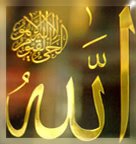Introducing the Qur'an's Literary Excellence, Part 2
Dawood, an Iraqi Jewish Scholar in his translation of the Qur'an comments on the sum effect of these and numerous other literary qualities of the Quran, describing it as a 'literary masterpiece':
"The Koran is the earliest and by far the finest work of Classical Arabic prose... It is acknowledged that the Koran is not only one of the most influential books of prophetic literature but also a literary masterpiece in its own right... translations have, in my opinion, practically failed to convey both the meaning and the rhetorical grandeur of the original."
Literary structures are composed of many elements that are too numerous to be discussed in detail in this article. They include diction, phonology, rhetoric, composition, morphology, syntax, architecture, rhythm, and style, in addition to matters related to tone, voice, orality, imagery, symbolism, allegory, genre, point of view, intertexuality, intratextual resonance,and other literary aspects - all of which are set within a historical, cultural, intellectual, and psychological context. These elements combine with each other in the Qur'an in myriad ways that produce the Qur'an's unique character. Zammit comments on this,
"Notwithstanding the literary excellence of some of the long pre-Islamic poems, or qasaid, the Qur'an is definitely on a level of its own as the most eminent written manifestation of the Arabic language."
Such assessments form the backdrop to the doctrine of Ijaz al-Quran - the inimitability of the Qur'an - that lies at the heart of the Qur'an's claim to being of divine origin. The Qur'an states,
"If you are in doubt of what We have revealed to Our messenger, then produce one chapter like it. Call upon all your helpers, besides Allah, if you are truthful" [Qur'an 2: 23]
And
"Or do they say he fabricated the message? Nay, they have no faith. Let them produce a recital like it, if they speak the truth." [Qur'an
52: 33-4]
In these verses, the Qur'an issues a challenge to produce a chapter that resembles its literary power and excellence. It is to demonstrate that its claim to divine authorship can be debased by producing what amounts to three lines of Arabic (its shortest chapter) that are grammatically correct, unique in style and employ various literary structures to its high standard. The tools needed meet this challenge are the finite grammatical rules and the twenty eight letters that make-up the Arabic language; these are independent and objective measures available to all. The fact that it has not been matched since it emerged to this day does not surprise most scholars familiar with the language Arabic and that of the Qur'an, as Palmer explains:
"That the best of Arab writers has never succeeded in producing anything equal in merit to the Qur'an itself is not surprising"
Due to the depth and scope of literary devices in the Qur'an this article will introduce selected literary structures that have been summarised above; sound, unique genre, dynamic style and its aesthetic elements. These features have been appropriately described by Hirschfield,
"The Qur'an is unapproachable as regards convincing power eloquence and even composition."
Sound
The Qur'an enhances its expression by the use of sounds. It employs various phonetic features that have an aesthetic and communicative effect. These features include the lengthening and modification of sounds so
that words and letters become similar to an adjacent or nearby sound, and nasalization. This unique feature can be found throughout the whole of the Qur'anic discourse. The Qur'an is abundant with these phonetic devices which construct an emotive and powerful image.This is done by the selection of the most apt word to portray the intended meaning while producing semantically orientated sounds. The way the Qur'an uses the words make it a harmonious tune as Sells states,
"…there is a quality to the sound of the Qur'an which anyone familiar with it in Arabic can recognize. Qur'anic commentators have discussed the power and beauty of this sound… is one of the key aspects of the science of analysing ijaz al-Qur'an (the inimitability of the Qur'an)."
The Qur'anic choice of words coupled with the power of sound, conveys meanings in a unique way. This feature of the Qur'an produces images and describes events as though they were happening in front of the reader. Johns explains,
"It is the language itself which constitutes the iconic tradition. Not a single word can be taken or heard in isolation. All represent nuclei of meaning that are cumulative and cohere, serving as triggers to activate the profoundest depths of religious consciousness."
The use of delicate sounds in the following example, exhibits the Qur'an's ability to express meaning via the sound of its text:
"And by the Night when it is still." [Qur'an 93: 2]
Waallayli itha saja
The way the Qur'an uses the word 'when it is still' produces a tranquil tone and a smooth sound. This indicates the peace, stillness and serenity that night time provides.The Qur'an also uses sound to build intense images, for example,
"And the producers of sparks striking" [Qur'an 100: 2]
Faalmooriyati qadhan
The word for sparks striking, 'qadhan', that is used here emits a sound that develops the sense of this image, the proximity of the Arabic letters 'daal' and the 'ha' is responsible for this sound. In another example:,
"Stirring up thereby clouds of dust." [Qur'an 100: 4]
Faatharna bihi naqAAan
"The Koran is the earliest and by far the finest work of Classical Arabic prose... It is acknowledged that the Koran is not only one of the most influential books of prophetic literature but also a literary masterpiece in its own right... translations have, in my opinion, practically failed to convey both the meaning and the rhetorical grandeur of the original."
Literary structures are composed of many elements that are too numerous to be discussed in detail in this article. They include diction, phonology, rhetoric, composition, morphology, syntax, architecture, rhythm, and style, in addition to matters related to tone, voice, orality, imagery, symbolism, allegory, genre, point of view, intertexuality, intratextual resonance,and other literary aspects - all of which are set within a historical, cultural, intellectual, and psychological context. These elements combine with each other in the Qur'an in myriad ways that produce the Qur'an's unique character. Zammit comments on this,
"Notwithstanding the literary excellence of some of the long pre-Islamic poems, or qasaid, the Qur'an is definitely on a level of its own as the most eminent written manifestation of the Arabic language."
Such assessments form the backdrop to the doctrine of Ijaz al-Quran - the inimitability of the Qur'an - that lies at the heart of the Qur'an's claim to being of divine origin. The Qur'an states,
"If you are in doubt of what We have revealed to Our messenger, then produce one chapter like it. Call upon all your helpers, besides Allah, if you are truthful" [Qur'an 2: 23]
And
"Or do they say he fabricated the message? Nay, they have no faith. Let them produce a recital like it, if they speak the truth." [Qur'an
52: 33-4]
In these verses, the Qur'an issues a challenge to produce a chapter that resembles its literary power and excellence. It is to demonstrate that its claim to divine authorship can be debased by producing what amounts to three lines of Arabic (its shortest chapter) that are grammatically correct, unique in style and employ various literary structures to its high standard. The tools needed meet this challenge are the finite grammatical rules and the twenty eight letters that make-up the Arabic language; these are independent and objective measures available to all. The fact that it has not been matched since it emerged to this day does not surprise most scholars familiar with the language Arabic and that of the Qur'an, as Palmer explains:
"That the best of Arab writers has never succeeded in producing anything equal in merit to the Qur'an itself is not surprising"
Due to the depth and scope of literary devices in the Qur'an this article will introduce selected literary structures that have been summarised above; sound, unique genre, dynamic style and its aesthetic elements. These features have been appropriately described by Hirschfield,
"The Qur'an is unapproachable as regards convincing power eloquence and even composition.
Sound
The Qur'an enhances its expression by the use of sounds. It employs various phonetic features that have an aesthetic and communicative effect. These features include the lengthening and modification of sounds so
that words and letters become similar to an adjacent or nearby sound, and nasalization. This unique feature can be found throughout the whole of the Qur'anic discourse. The Qur'an is abundant with these phonetic devices which construct an emotive and powerful image.This is done by the selection of the most apt word to portray the intended meaning while producing semantically orientated sounds. The way the Qur'an uses the words make it a harmonious tune as Sells states,
"…there is a quality to the sound of the Qur'an which anyone familiar with it in Arabic can recognize. Qur'anic commentators have discussed the power and beauty of this sound… is one of the key aspects of the science of analysing ijaz al-Qur'an (the inimitability of the Qur'an)."
The Qur'anic choice of words coupled with the power of sound, conveys meanings in a unique way. This feature of the Qur'an produces images and describes events as though they were happening in front of the reader. Johns explains,
"It is the language itself which constitutes the iconic tradition. Not a single word can be taken or heard in isolation. All represent nuclei of meaning that are cumulative and cohere, serving as triggers to activate the profoundest depths of religious consciousness.
The use of delicate sounds in the following example, exhibits the Qur'an's ability to express meaning via the sound of its text:
"And by the Night when it is still." [Qur'an 93: 2]
Waallayli itha saja
The way the Qur'an uses the word 'when it is still' produces a tranquil tone and a smooth sound. This indicates the peace, stillness and serenity that night time provides.The Qur'an also uses sound to build intense images, for example,
"And the producers of sparks striking" [Qur'an 100: 2]
Faalmooriyati qadhan
The word for sparks striking, 'qadhan', that is used here emits a sound that develops the sense of this image, the proximity of the Arabic letters 'daal' and the 'ha' is responsible for this sound. In another example:,
"Stirring up thereby clouds of dust." [Qur'an 100: 4]
Faatharna bihi naqAAan
.
__,_._,___





No comments:
Post a Comment